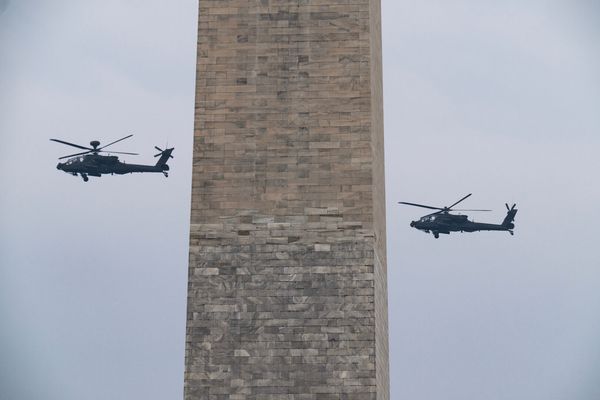There’s a story within the media that many love to parrot, about how there is no more American manufacturing. But that’s just not true. I know that reality flies against everything you’ve likely seen on TV for the last 30 years, as well as on social media. But there’s still this vibrant manufacturing base all across this country, if you know where to look.
From small mom and pops to global conglomerates, folks are still showing up every day, using their hands, putting things together, tinkering with how to make those things better, and ensuring that Made in America is stamped on every label. And more importantly, that it’s a true statement.
It’s absolutely smaller than it was in our parents’ day, but the kind of products that still bear that mark remain some of the best around. See, because it’s become a more difficult thing to do and still keep afloat, only the best-of-the-best survive. It also means that the stuff won’t fall to pieces, or have planned obsolescence built in.
Instead, you get products that you’ll keep for life.
I’ve been thinking about this story for the last two years. It’s played in the back of my mind, as I’ve hoped to one day bring it to readers in a real way. I’ve had different iterations, but I eventually settled on a conceit that was uniquely American, as well as one that was uniquely me. It isn’t so much my story, though, as I found it was a story of a commitment to quality, a commitment to history, and a commitment to the future more than anything else.
So that’s why I took an American-made Harley-Davidson Street Glide to Gunnison, Utah, to visit the home of Christensen Arms. Once there, I built myself an all-American hunting rifle that’d be able to take down all-American elk, deer, and whatever else I chose.
Bald eagles intensify.




The trek down to Gunnison wasn’t all that long, as I only live a few hours away. But cruising southward along the 15, and then streaking through the rolling plains that make up this part of Utah, there’s a sense of American identity that’s palpable. The West is something that just calls out to you, a siren song that lures you into its depths, asking you to explore, innovate, and build.
It’s honestly why I made my home here. And roaring through the backroads on the Street Glide, passing cattle ranches, old ghost towns, new housing developments, farms, and expansive stretches of public lands, I could feel that pull. That sense of pride in what this country has to offer.




Christensen Arms began like so many other American companies: In a garage. And the company’s founder, Roland Christensen, was like so many of us: A tinkerer. He had gained a Ph.D in mechanical engineering, focusing on the aerospace industry, and then built up a small company that developed composite components for the sector. This was right around when carbon fiber really began to take off (pardon the aerospace pun), and Roland was delving into the emerging composite technology headfirst. But again, he also liked to toy with concepts that he had rummaging around his head.
While other everyday prototypes came first—baseball bats, golf club heads, and more—he was also a hunter. One day, the idea struck him to mill down the barrel of a rifle and then wrap the whole thing in carbon fiber. Theoretically, it’d be lighter, stronger, and stiffer, in addition to having some pretty solid thermodynamic qualities as compared to a more traditional, all-steel barrel. Plus, the cadre of hunters he was around thought it was a pretty solid idea, too. That is, if it worked.
And to quote the Christensen Arms, “It worked.”


That was more than three decades ago, and from those humble garage beginnings, Christensen Arms has left the small shop and expanded to two buildings that total 77,000 square feet. It now employs about 180 people.
Touring the facility is awe-inspiring, as I’ve always been fascinated with the engineering that goes on behind the scenes. Christensen Arms encompasses both the new, with modern milling machines, lathes, and multi-million-dollar quality assurance laser scanners that inspect parts down to the micron. It goes hand-in-hand with the old-school, in the form of hand-laying carbon fiber both for its stocks and on its barrels; the technology the company pioneered.
And the folks who work there, who machine the receivers and bolt assemblies, who test fire the barrels and ensure a round will chamber, who ensure that every part, bolt, pin, and muzzle brake work, all take such pride in their work. It’s amazing to witness firsthand.

There’s a commitment to the future, too, as Christensen Arms recruits out of the local technical colleges, as well as right out of local high schools. It’s teaching the next generation the fine art of manufacturing in a hands-on way. Many of the folks working at the facility were younger than me, something I didn’t expect, but was excited to see. And every single one of them had a technical know-how that far exceeded my humble capabilities.
But that didn’t stop Christensen Arms’ Jeff Bradley, my guide through the facility and someone who’s worked at the brand for over a decade, from believing in me enough to set up a workstation with every constituent part laid out in front of me so I could build my very own Ridgeline FFT rifle, chambered in 7 PRC.




Sure, I’m mechanically inclined, but seeing the rifle in its atomic structure—for lack of a better phrase—laid out across the desk as if it was an exploded CAD drawing, and having both Jeff and Adam Hansen, the brand’s final assembly expert, watch me put it together, was intimidating. Watchful eyes of the world, and all.
Plus, I’d rather not do something wrong and have the rifle explode in my face, and I also didn’t want to tarnish all the good work that went into Christensen’s parts. Luckily, with Jeff and Adam overseeing my mechanical aptitude, everything went together fairly smoothly. At the end, I bent one pin by being a little too tentative with my hammering. But in building the rifle myself, assembling every piece, and laying my hands on each part, I really got a sense of what the brand’s workforce does every day to maintain that seemingly elusive Made in America quality.

I’m not as good as they are by any means. How could I be, as I was there for less than a day, and these folks are there day in and day out, honing their skills? But considering the number of hands that touch your rifle before you do, and whose job it is to make sure you’ve got something that’ll ethically put an animal down when the time comes, it’s incredible to see the amount of passion that goes into every single rifle that comes out of the company.
Yet, a hunting rifle is incomplete without a few additional items. And given that I wanted to make this an all-American rifle, one that could reach out far if need be, I chose two other constituent parts to include in the build: a VX-6HD Gen 2 scope from Leupold, and Trophy Grade AccuBond 7 PRC ammunition from Nosler. Both companies are out of Oregon, with Nosler operating first out of Ashland and now Bend since 1948, and Leupold starting in Portland in 1907 now resides in Beaverton just up the road. Each has continued its operations here in the US, while many of their competitors have moved overseas or been bought by large international companies.



After installing the Leupold, Adam and Jeff looked over my work. They checked that all bolts were in their specified torque ratings, and then we took my rifle over to Christensen’s indoor, but subterranean, test facility, which is just a stone’s throw from the main building.
There, every rifle is subjected to a test-firing procedure to ensure its accuracy using the 150-yard range, as each unit comes with a specific accuracy guarantee. My Ridgeline FFT has a sub-MOA guarantee—Minutes of Angle—which means it’ll shoot a three-round group within an inch of each other at 100 yards. We nailed that promise right off the bat, and then dialed the scope to zero within six to nine shots.
It was confidence-inspiring, to say the least, as I tend to fret over tiny details when it comes to my hunting setups. After all, I want to make the best, most ethical shot I can. And my OCD to ensure that level has led me to change my Elite bow numerous times so far. Including just the other day, when something felt wrong, and I completely disassembled and then rebuilt it just to ensure that it was perfect.

But what I got out of the day with Christensen was more than just a badass rifle that’ll hopefully help me take down some lovely free-range, grass-fed, and delicious ungulates later this year. Again, this story has been kicking around my head for a while, and it’s one that I was dying to tell because it’s one that’s seemingly gotten lost in the shuffle of countless talking points.
American manufacturing hasn’t been lost to time. It’s very much still here. And the label Made in America still means something to a lot of people across the country.
There’s a true sense of pride and expertise that is instilled in every part built, stamped, and used to put together each of these products. One that’s emblematic of the ride I took to and from Christensen Arms through central Utah. Whether that’s in the Harley-Davidson I rode, built in Menomonee Falls, Wisconsin and York, Pennsylvania; the Christensen Arms rifle, built in Gunnison, Utah; the Leupold scope, built in Beaverton, Oregon; the Nosler ammunition, built in Bend, Oregon. Hell, even the Marsupial Gear rifle case I used to carry the rifle home strapped to my back—one of the coolest things I’ve ever done so far—is manufactured in Phoenix, Arizona.
The concept of Made in America still means a lot to so many people, and we can’t just forget about them.
As for my plans for this rifle, I’ll simply say, stay tuned. I have a lot of plans for it, including adding some additional parts that’ll make it one of the raddest builds around, along with some seriously gnarly backwoods adventures that’ll require both two and four wheels.
Yeah, this might have been the first time it’s been strapped to my back while riding a motorcycle, but it won’t be the last.







